Overview
Application Scenario
To enable a better user experience and a simpler printing scenario, in FineReport 11.0, the printing function is upgraded with a unified printing entry integrated by various printing methods, making your selection easier and clearer.
 Note:
Note:1. Both the V11.0 designer and deployment package use OpenJDK, which causes the inability to start Flash printing. You can switch OpenJDK to Oracle/Sun JDK.
2. Flash printing, currently a deprecated technology, is no longer supported in many browsers. You are advised to use No Client Printing or Local Printing.
3. Only general reports support printing.

Function Description
The following describes the characteristics of printing:
Strong usability: With easy setting, the printing function allows you to pre-configure the page and pass the configuration to the printer, save your printing preferences, and enables one-click printing without complex setting. What's more, the function support almost all types of printers on the market. You can avoid poor printing effects (for example, unclear printing) of dot matrix and thermal printers through Local Printing.
Rich functionality: The printing allows various functions such as overlay printing, batch printing, print content control, print offset, and silent printing.
Powerful performance: In the same environment, the printing time of no client printing is less than half thatof a similar competing product, while the printing time of local printing is less than one-third that of a similar competing product.
Printing Function
Two printing methods are available:
No Client Printing: You can print anytime on any machine and do not need to install printing software. The method is suitable for customers who prefer printing convenience.
Local Printing: You need to install the printing software. Free of browser restrictions, the method is suitable for customers who have fixed machines for large-scale printing, enabling higher efficiency and richer settings.
Function | Description | No Client Printing | Local Printing | Related Document |
Preferred printer | You can bind a report to a printer, which is selected preferentially for report printing, removing the need to select a printer every time. | Not supported | Supported | / |
Print offset | With the page margin settings added, you can adjust the margin of the print content for print offset, ensuring consistent printing effects on different printers. | Supported | / | |
Silent printing | Since printing inherits the paper, layout, and margin configurations of a template, you can can set the printing style to be used in advance in the designer and directly use the unified configurations without additional setting in a pop-up window. | Supported in IE Not supported in other browsers | Supported | / |
Print content control | You can set the content in the designer to determine whether the content is to be printed. | Supported | / | |
Overlay printing | You can perform overlay printing of content such as invoices and shipping documents. | Supported | / | |
Batch printing | You can perform batch printing of multiple parameter values in a single template. | Supported | / | |
Server-side printing | You can directly call the server-connected printer with a simple JS API, removing the need to connect local PC to a printer. | Supported | / | |
Printing in HTTPS | You can use Local Printing in FineReport11.0 in the HTTPS environment. | Supported | / | |
Cross-domain printing | / | Not supported: HTTPS access to HTTP Supported: HTTP access to HTTP Supported: HTTP access to HTTPS Supported: HTTPS access to HTTPS | / | |
Printing Setting
Setting Method
Server Configuration
Choose Server > Server Configuration > Printing Setting on the designer menu. You can set the printing method, which will take effect for all templates, as shown in the following figure.

Template Configuration
Choose Template > Print Setting. Use Server Settings is selected by default. You can select Set for This Template Separately. In this case, the setting configured will take effect for only the current template, as shown in the following figure.

No Client Printing
The following figure shows the setting items in No Client Printing.

The following table describes the definition of each setting item:
Setting | Definition | |
Set Printing Margin During Printing | Ticked | You can set the printing margin in the pop-up box. |
Unticked | The printing margin in the default setting is used directly. | |
No Printing Setting Displayed in IE | Ticked | The silent printing is used in IE. |
Unticked | Printing setting is displayed in IE. | |
Needle Printing Optimization | Ticked | During printing, the font of a text is set to be in bold to optimize the printing effect. |
Unticked | The actual font of a text is printed. | |
Inherit Page Margin Setting | Ticked | The page margin setting is inherited. |
Unticked | You can customize the top, bottom, left, and right margins. | |
Local Printing
Software Installation
To use Local Printing, the FinePrint software needs to be installed on the client. You can download the FinePrint V6:
 Note:
Note:You can set the software download address under Server Configuration > Printing Setting, as shown in the following figure.

The following table describes each setting item.
Setting | Definition | |
Software Download Address | Tick Default | The download address of the printing software is the default address (provided by FineReport). |
Untick Default | You can customize the download address. When using an intranet, you can set an intranet address for downloading. For example, you can fill in the relative path /webroot/FinePrint_Windows_6_0.exe in Software Download Address to put the downloaded FinePrint software in the webroot directory. | |
Printing Software Port Number | The silent printing function is used in Internet Explorer.  Note: Note: | |
Basic Setting
The following figure shows basic settings for Local Printing.

The following table describes each setting item.
Setting | Definition | |
Require Printing Setting Window During Printing | Ticked | A pop-up window appears for print property configuration. |
Unticked | The paper, layout, and margin settings of the template is inherited. You can preconfigure the printing styles and use these unified settings without the setting window popping up, enabling silent printing. | |
Specify Sheet for Printing | Unticked by default After ticking, when you click the Print button during printing, a pop-up window will appear, and all sheets are selected by default, as shown in the following figure.
 Note: Note: | |
Printer | You can bind printers to reports. The system can automatically retrieve available local printers. If no printers are available, the drop-down list will display None. | |
Number of Copies | Number of copies to be printed. The default value is 1. | |
Page Number | All Pages is ticked by default. When you tick Specified Page, you can enter the value that meets the format requirements in the text box. When you tick Duplex Printing, you can select Odd Page or Even Page for printing. | |
Paper | Ticked | The page paper setting is inherited. |
Unticked | You can set the paper size to be printed in the drop-down box. | |
Layout | Ticked | The page layout setting is inherited. |
Unticked | You can customize whether the page is printed vertically or horizontally. Vertical is ticked by default. | |
Margin | Ticked | The page margin setting is inherited. |
Unticked | You can customize the top, bottom, left, and right margins of the page. | |
Zoom | Ticked | The content is scaled to fit the paper size during printing. |
Unticked | You can customize the zoom ratio. | |
Print Button
Choose Template > Web Attribute, select Pagination Preview Setting, Data Entry Setting, or Data Analysis Setting according to the template type, select Set for This Template Separately from the drop-down list of Following Settings, and double-click the Print button to add a print button to the toolbar, as shown in the following figure.

 Note:
Note:1. The old print button is displayed as Print (Compatible).
2. After the version upgrade, the old print button can no longer be added to the toolbar for use. You can add a custom button that calls the appropriate API to the toolbar to achieve the old printing method.
Printing Permission
For FineReport with JAR packages released after 2020-04-26, a new printing authentication mechanism is added, and the printing permission is controlled by Template Authentication.
The printing authentication mechanism is applicable to Local Printing, No Client Printing, and other compatible printing methods (such as PDF printing and Flash printing). Server-side printing is not restricted.
 Note:
Note:Printing Authentication Mechanism
Scenario | Printing Permission | Prompt |
Template Authentication disabled | Any user can print any template. | / |
Template Authentication enabled with no templates selected for authentication | ||
Template Permission enabled with Authenticate User Password Only selected | Logged-in users can print any template. | When non-logged-in users try to print, the prompt "Log in first before printing" is displayed. |
Template Authentication enabled with Authenticate Role Permission selected | Logged-in users can print templates that they have permission to access. | When logged-in users try to print a template that they have no permission to access, the prompt "You do not have the permission to print this template" is displayed. When non-logged-in users try to print a template, the prompt "Log in first before printing" is displayed in the upper right corner. |
Template Authentication enabled with Authenticate Digital Signature selected | Users authenticated via digital signature can print templates that they have permission to access. | When users authenticated via digital signature try to print a template that they have no permission to access, the prompt "You do not have the permission to print this template" is displayed. When users who are not authenticated via digital signature try to print a template, the prompt "You do not have the permission to print this template" is displayed. |
Cross-domain Printing Authentication
For cross-domain printing, choose Server > Platform Management and log in to the decision-making system. Choose System Management > Security Management > Security, click Advanced Setting of Security Headers, and disable Prevent Clickjacking and Prevent Content Sniffing Attack, as shown in the following figure.








